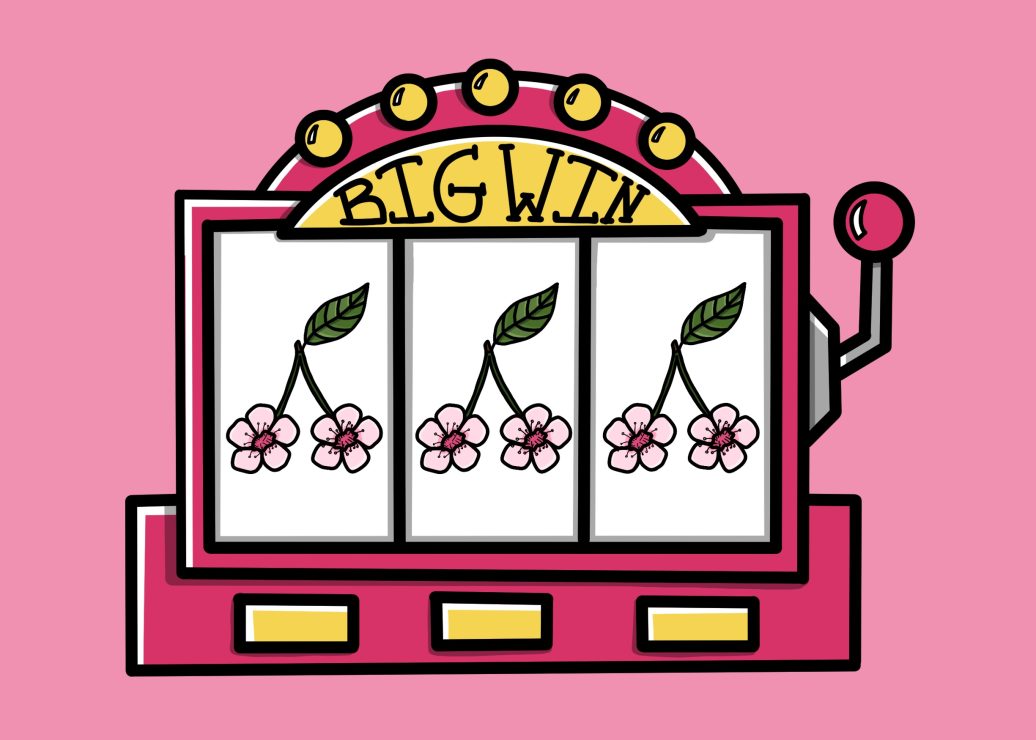‘Climate weirding’ poses a threat to these plants and others in the city

Illustration by Abby Koning.
Victoria’s downtown cherry blossom trees began blooming two weeks ago, making a notable show along View Street. Locals and tourists alike are taking to social media to share photos of these gorgeous trees, and news outlets are announcing the welcome arrival of the dappled pink blooms. But this year, these trees blossomed a week earlier than usual — and their preemptive arrival might be cause for concern.
The cherry blossom tree, a fixture of Japanese culture, nearly went extinct in Japan in the mid-20th century due to a combination of air pollution and the abandonment of many feudal estates and their cherry trees. The species recovered. Now, here in Victoria, this non-native species is facing a new challenge: like many spring-blooming plants, it’s flowering earlier, which is both a threat to the tree itself and to the species that rely on it to survive.
Dr. Brian Starzomski, a conservation ecologist who studies biodiversity and climate change, specifically in B.C., told the Martlet that these beautiful trees are more than decorative.
“We like them for all kinds of reasons … They are absolutely beautiful, they often smell really great, and they make us feel really happy when we see them,” he explains. “But they’re also important as resources for all kinds of insects and birds and all kinds of other things that might live with them.”
Now, climate change and other urban effects, such as the greater warmth of cities compared to rural areas, mean that the phenology (or natural seasonal cycle) of cherry blossom trees and other plants like it has shifted. Cherry blossom trees in Victoria have historically bloomed between late February and early May, or at the earliest, around Valentine’s Day. This year, they flowered around Feb. 5.
The challenges that their early bloom poses to both the trees themselves and their codependent species, like pollinators, boils down to the effects of a phenomenon called “global weirding,” rather than global warming, Starzomski explains.
Global weirding or climate weirding refers to the volatile variation between periods of extreme weather. This year in Victoria, for example, we saw a cold snap in mid-January, followed by a much warmer period that continues at the time of writing.
Cherry blossom trees, Starzomski explains, are unique in that they need to be cold before they flower, but once they do, they must be warm. Fortunately, the extreme temperature swing this year satisfied this requirement.
“They just barely missed getting hammered by the very cold weather,” says Starzomski. “If that cold weather had happened after the warm weather, then it could have killed a lot of the blossoms of the buds.”
Other plants around the city with different ideal blooming conditions, such as cherry laurel, were not so lucky.
“[They are] really dying back because of the impacts of the cold weather,” Starzomski says.
“Climate mismatches,” another threat posed by this phenological shift, occur when the seasonal cues that interdependent species rely on happen at staggering intervals. For example, a plant may bloom when the climate reaches a certain temperature, but the plant’s pollinators may only come out when their habitat receives a certain amount of sun. When an organism starts its seasonal cycle at a different time than its resource, its livelihood is threatened.
As the cherry blossom tree begins its bloom cycle earlier in the year, its seasonal cycle becomes mismatched with its pollinators, soil nutrients, and other resources.
But, Starzomski says, cherry blossom trees aren’t the only plant species in Victoria that’s suffering the consequences of climate weirding.
Because of its unique dry and warm ecosystem (relative to the rest of the country), Victoria is home to some of the most endangered or threatened plants in Canada. Victoria’s paintbrush, a small, green, close-to-the-ground plant with yellow buds, is one such species.
The Chinese Cemetery at Harling Point is home to many of these rare plants. The area got “hammered” by high tide during a storm in January, explains Starzomski, decimating much of the endangered flora there.
“There are these other things that are happening as well that are not as obvious” as what is happening with the cherry blossom trees, he says of the decimation of Harling Point’s ecosystem. Despite the threats to the survival of these plants, some miraculously remain, and Starzomski would encourage you to visit them as well as the beautiful cherry blossoms on View.
“Most people don’t know about those rare plants,” he says. “[They] start blooming right around the time that the cherry blossoms do, and they’re quite beautiful as well.”








